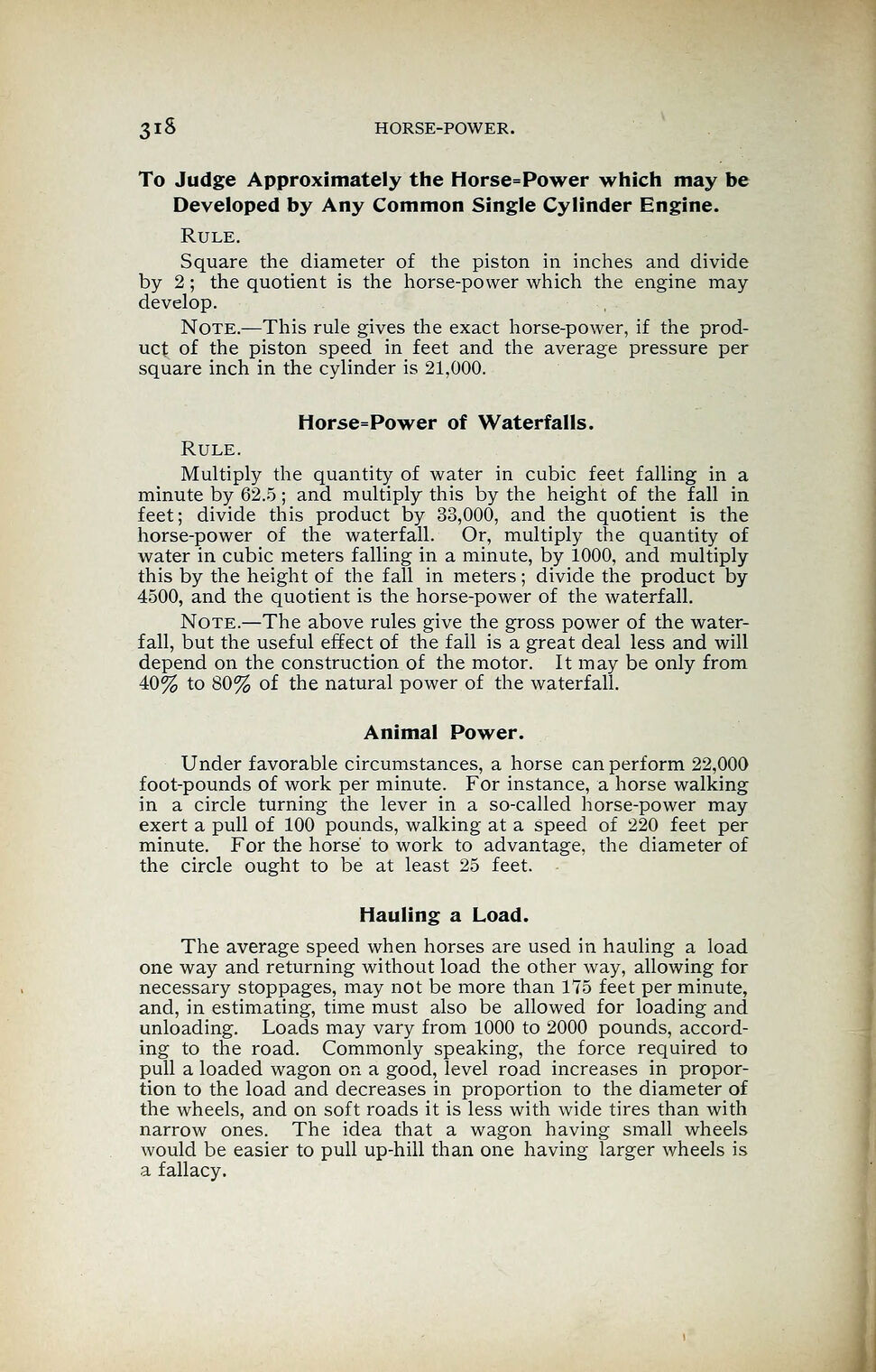
Full resolution (JPEG) - On this page / på denna sida - Mechanics - To judge approximately the horse-power which may be developed by any common single cylinder engine - Horse-power of waterfalls - Animal power - Hauling a load

<< prev. page << föreg. sida << >> nästa sida >> next page >>
Below is the raw OCR text
from the above scanned image.
Do you see an error? Proofread the page now!
Här nedan syns maskintolkade texten från faksimilbilden ovan.
Ser du något fel? Korrekturläs sidan nu!
This page has never been proofread. / Denna sida har aldrig korrekturlästs.
3lS HORSE-POWER.
To Judge Approximately the Horse=Power which may be
Developed by Any Common Single Cylinder Engine.
Rule.
Square the diameter of the piston in inches and divide
by 2 ; the quotient is the horse-power which the engine may
develop.
Note.—This rule gives the exact horse-power, if the prod-
uct of the piston speed in feet and the average pressure per
square inch in the cylinder is 21,000.
Horse=Power of Waterfalls.
Rule.
Multiply the quantity of water in cubic feet falling in a
minute by 62.5 ; and multiply this by the height of the fall in
feet; divide this product by 33,000, and the quotient is the
horse-power of the waterfall. Or, multiply the quantity of
water in cubic meters falling in a minute, by 1000, and multiply
this by the height of the fall in meters ; divide the product by
4500, and the quotient is the horse-power of the waterfall.
Note.—The above rules give the gross power of the water-
fall, but the useful effect of the fail is a great deal less and will
depend on the construction of the motor. It may be only from
40% to 80% of the natural power of the waterfall.
Animal Power.
Under favorable circumstances, a horse can perform 22,000
foot-pounds of work per minute. For instance, a horse walking
in a circle turning the lever in a so-called horse-power may
exert a pull of 100 pounds, walking at a speed of 220 feet per
minute. For the horse to work to advantage, the diameter of
the circle ought to be at least 25 feet.
Hauling a Load.
The average speed when horses are used in hauling a load
one way and returning without load the other way, allowing for
necessary stoppages, may not be more than 175 feet per minute,
and, in estimating, time must also be allowed for loading and
unloading. Loads may vary from 1000 to 2000 pounds, accord-
ing to the road. Commonly speaking, the force required to
pull a loaded wagon on a good, level road increases in propor-
tion to the load and decreases in proportion to the diameter of
the wheels, and on soft roads it is less with wide tires than with
narrow ones. The idea that a wagon having small wheels
would be easier to pull up-hill than one having larger wheels is
a fallacy.
<< prev. page << föreg. sida << >> nästa sida >> next page >>